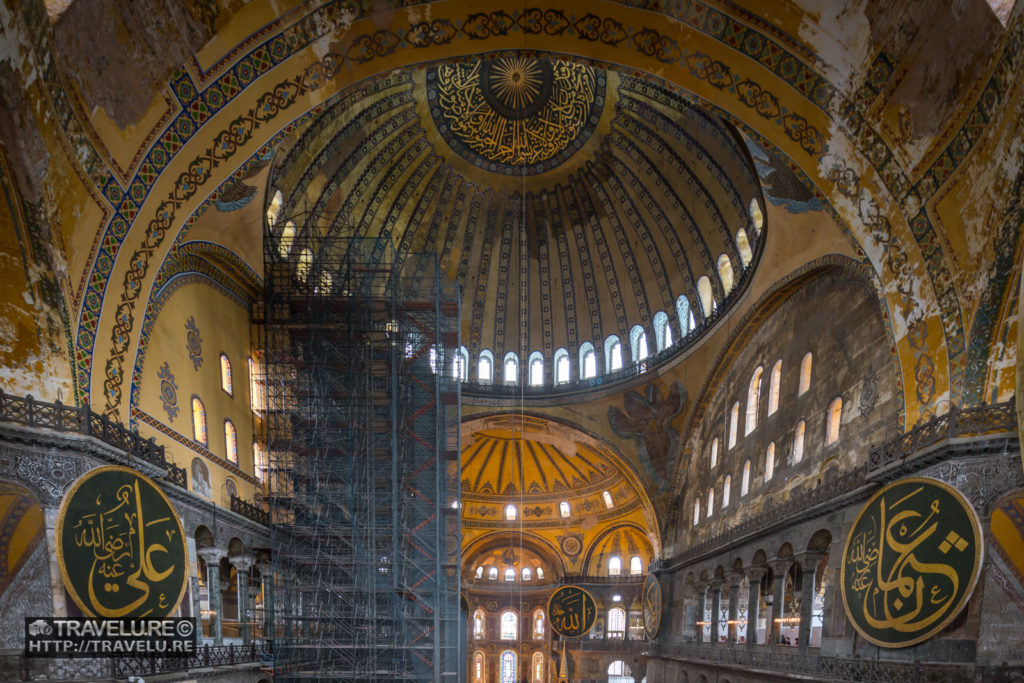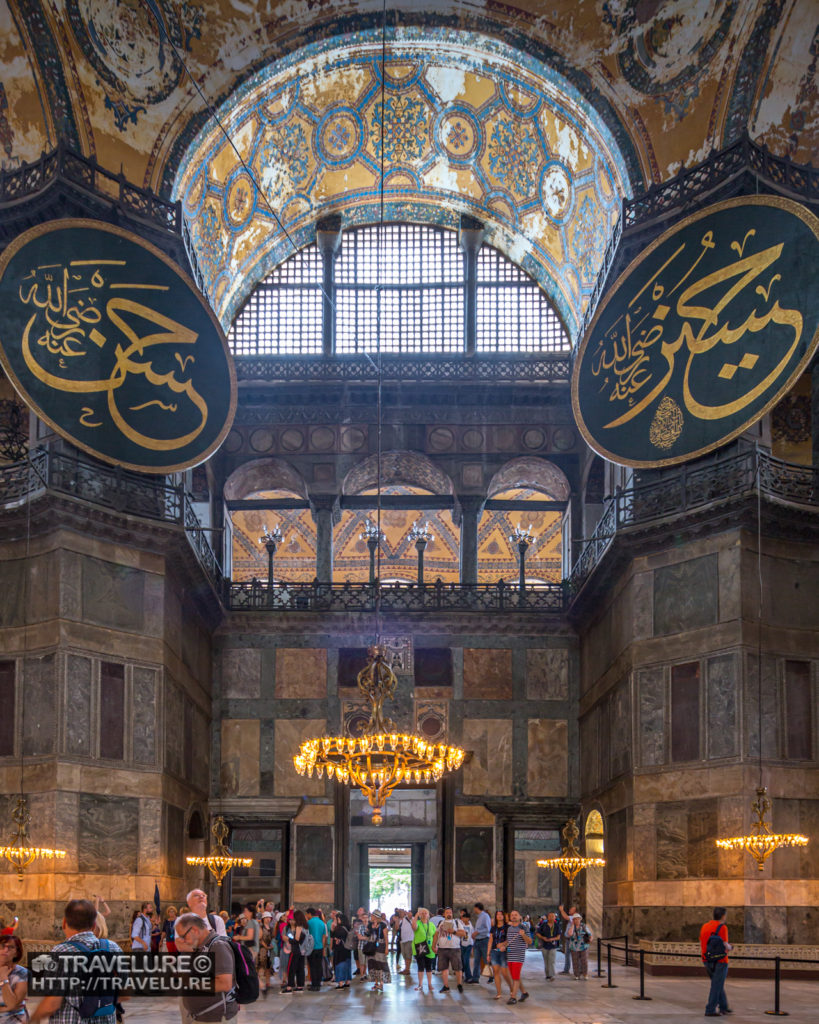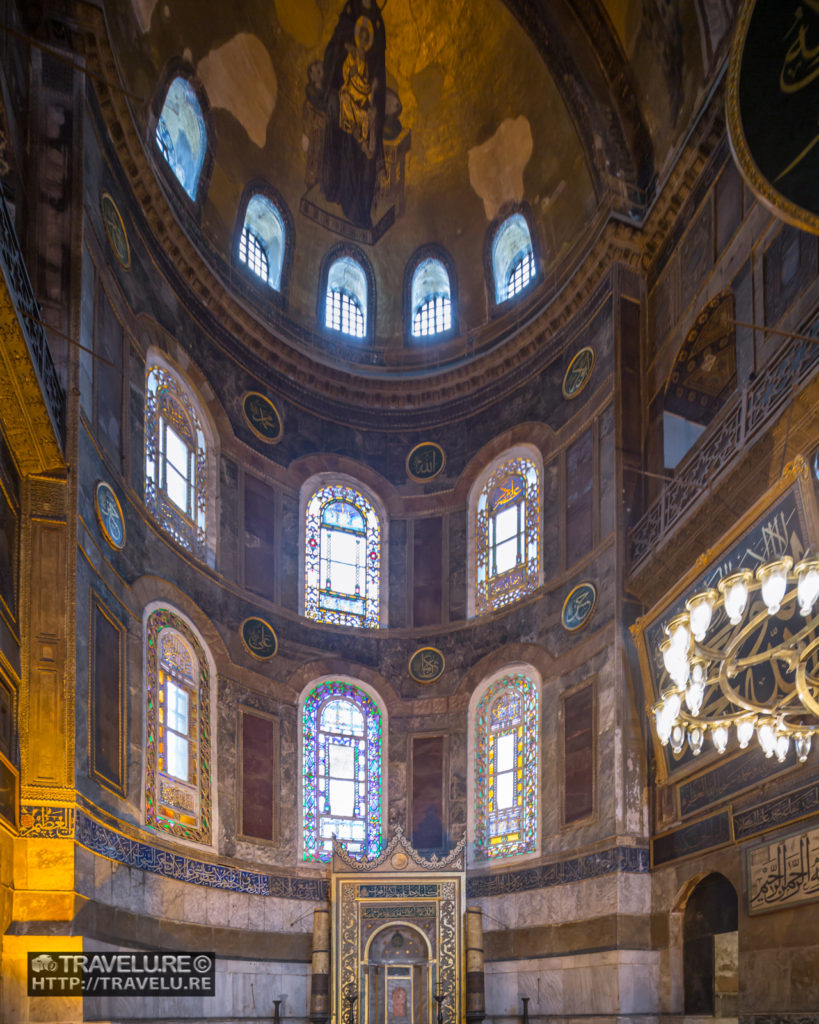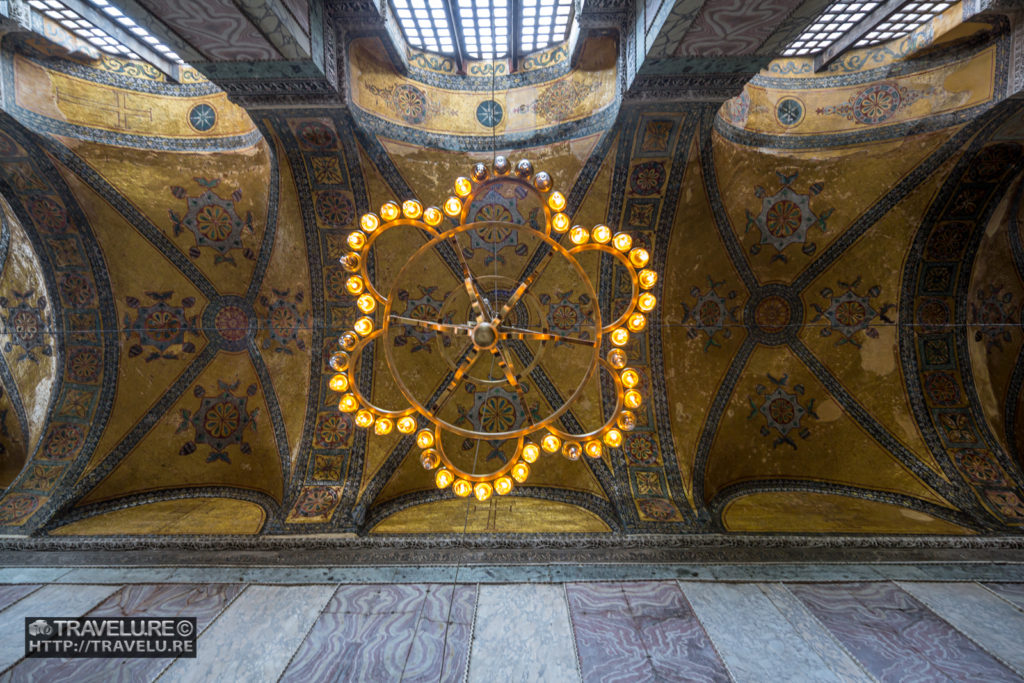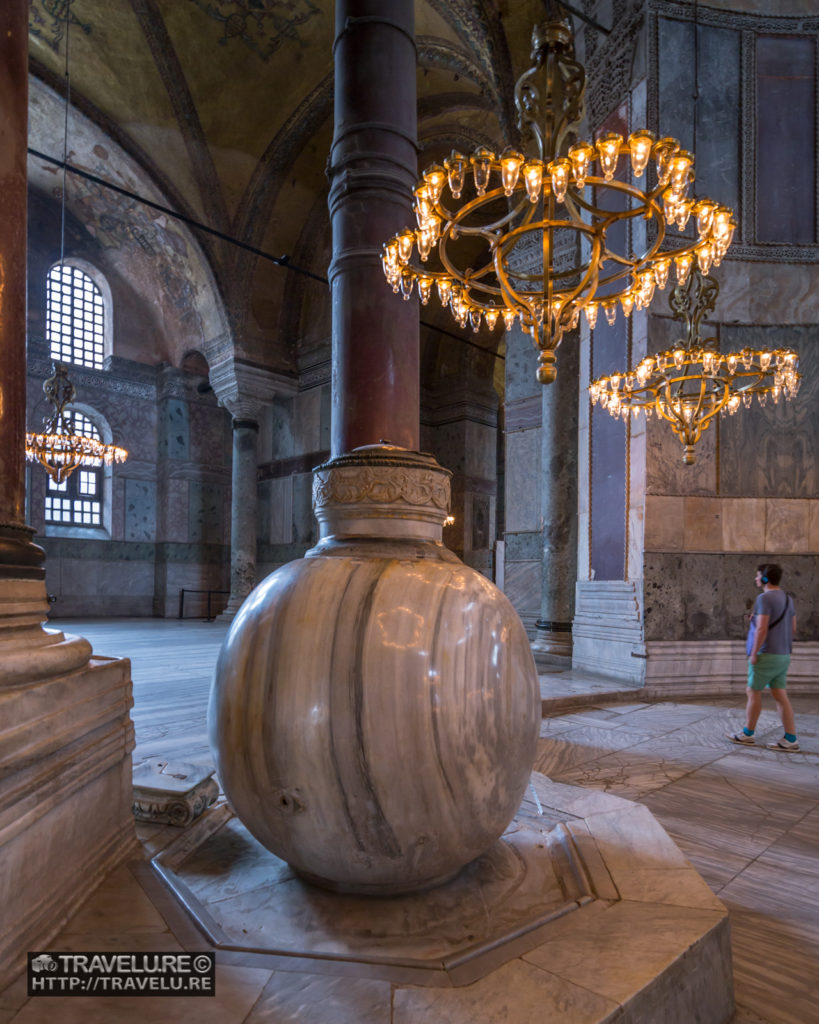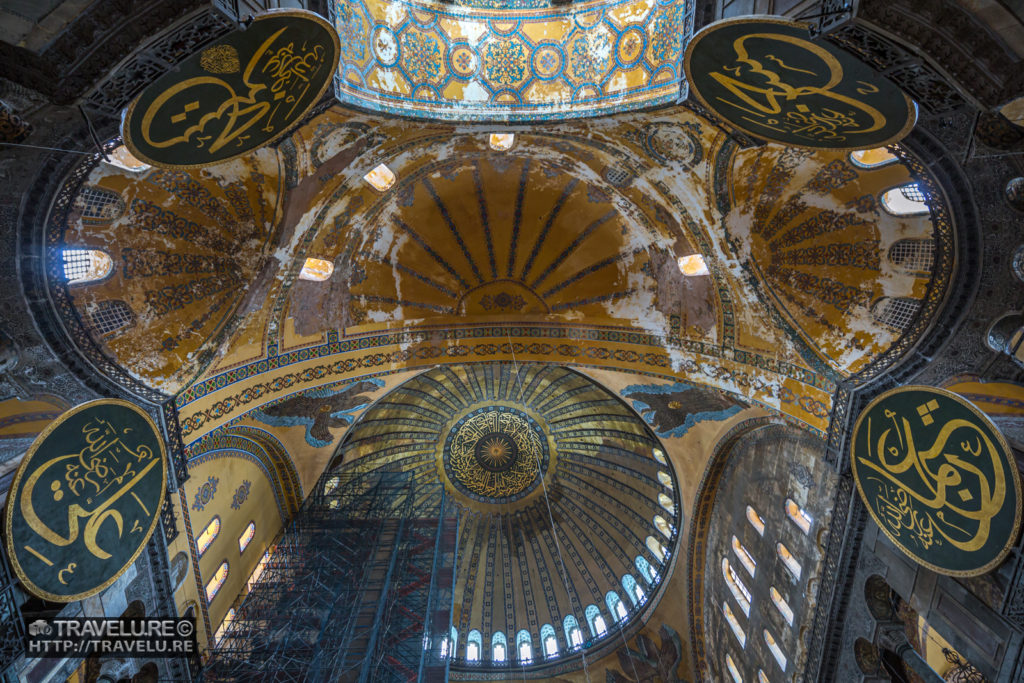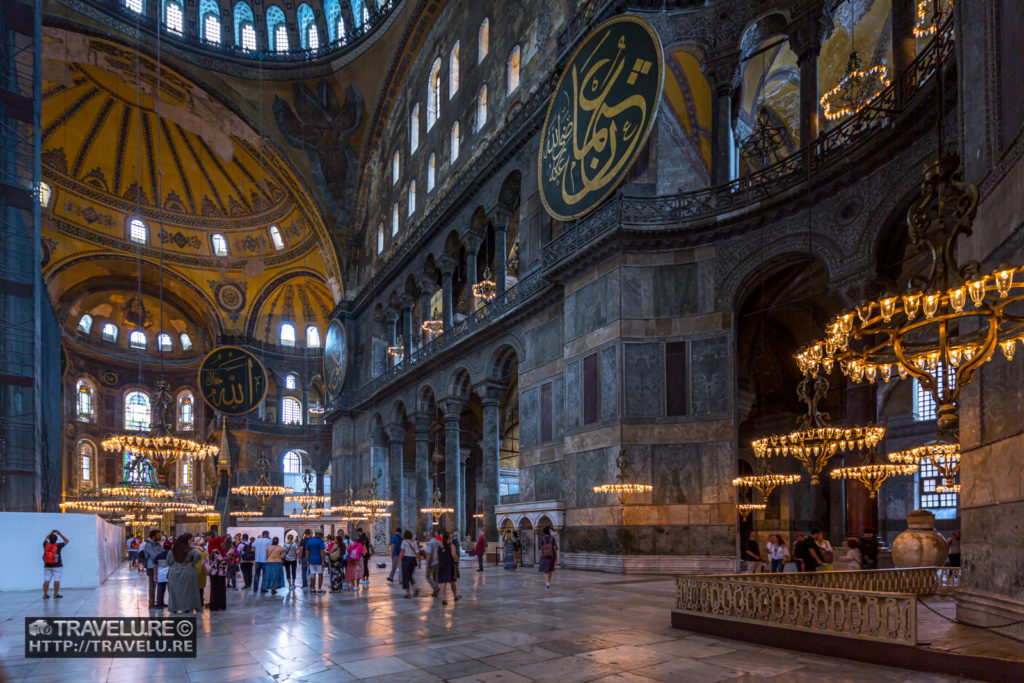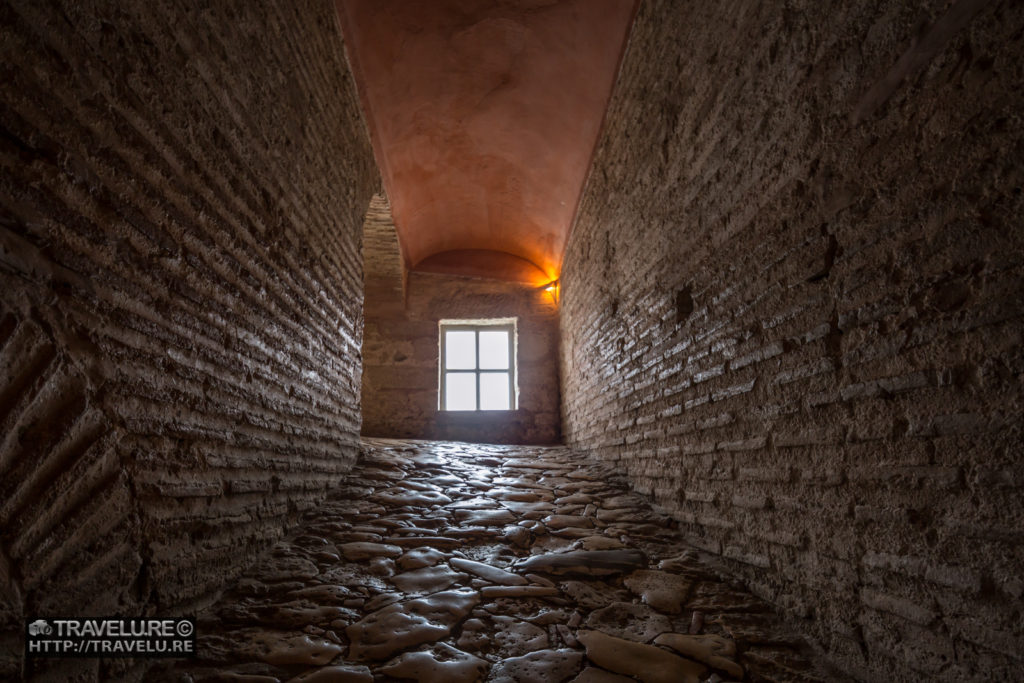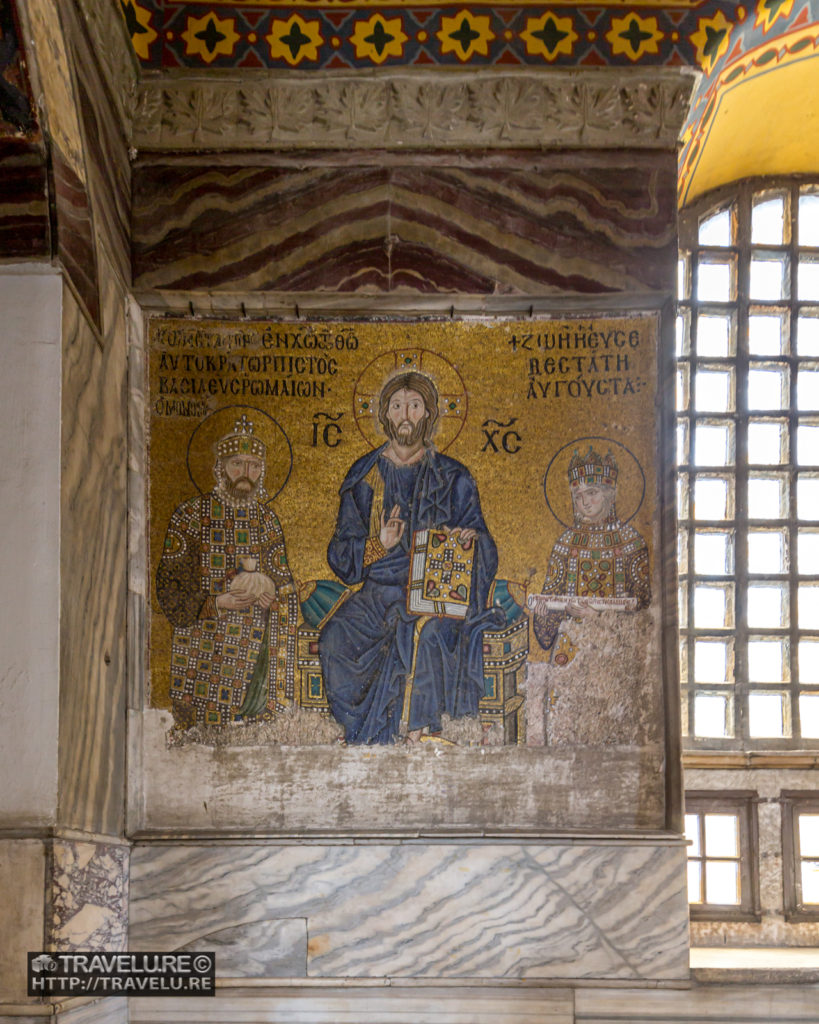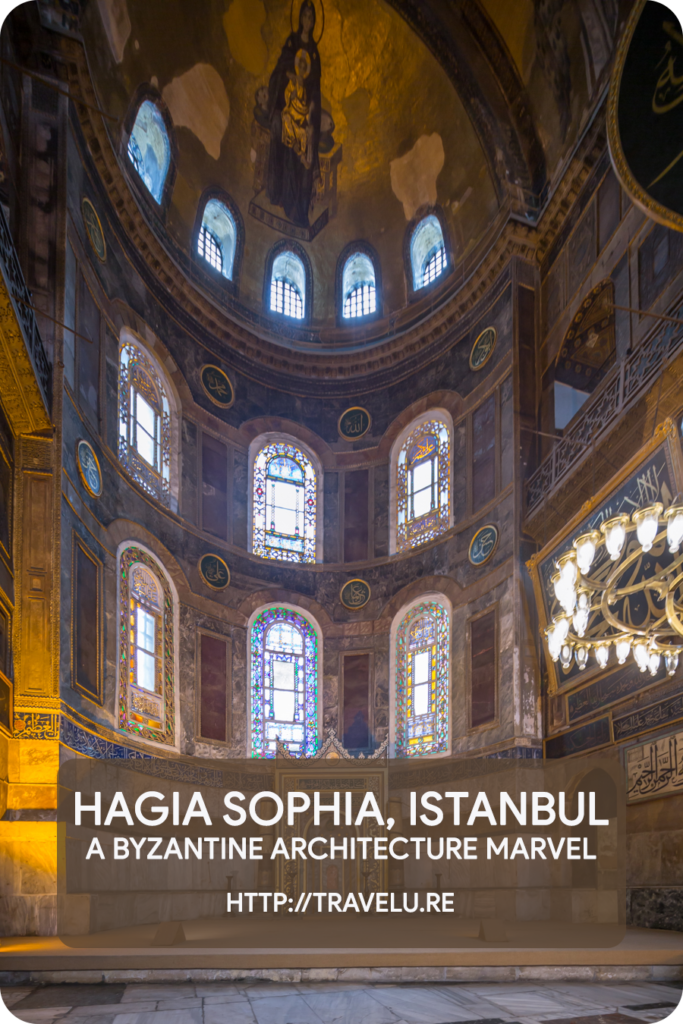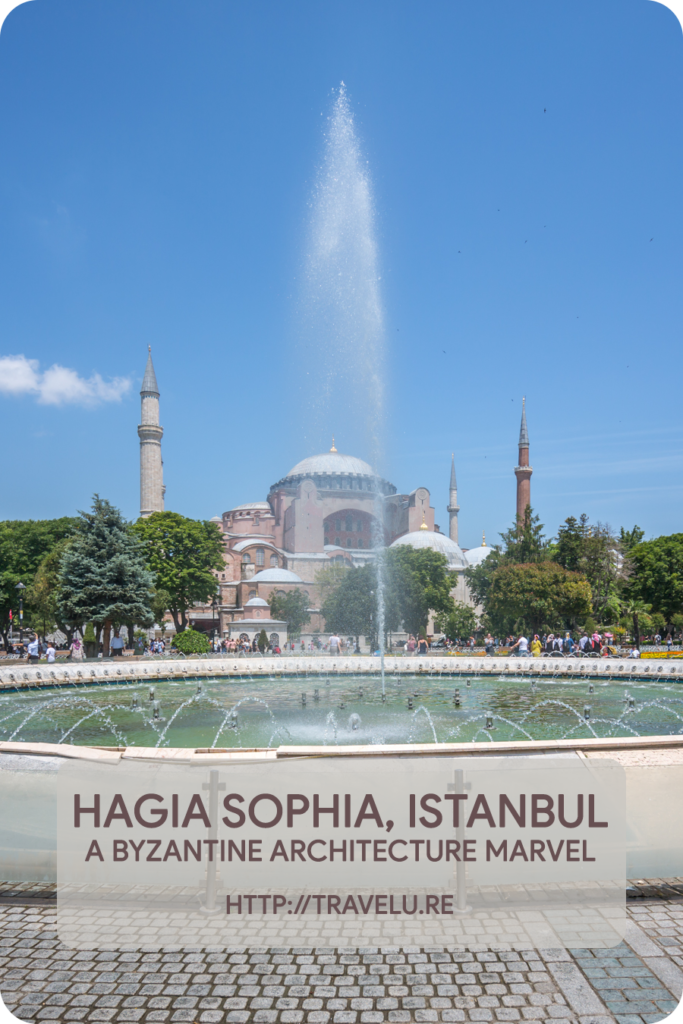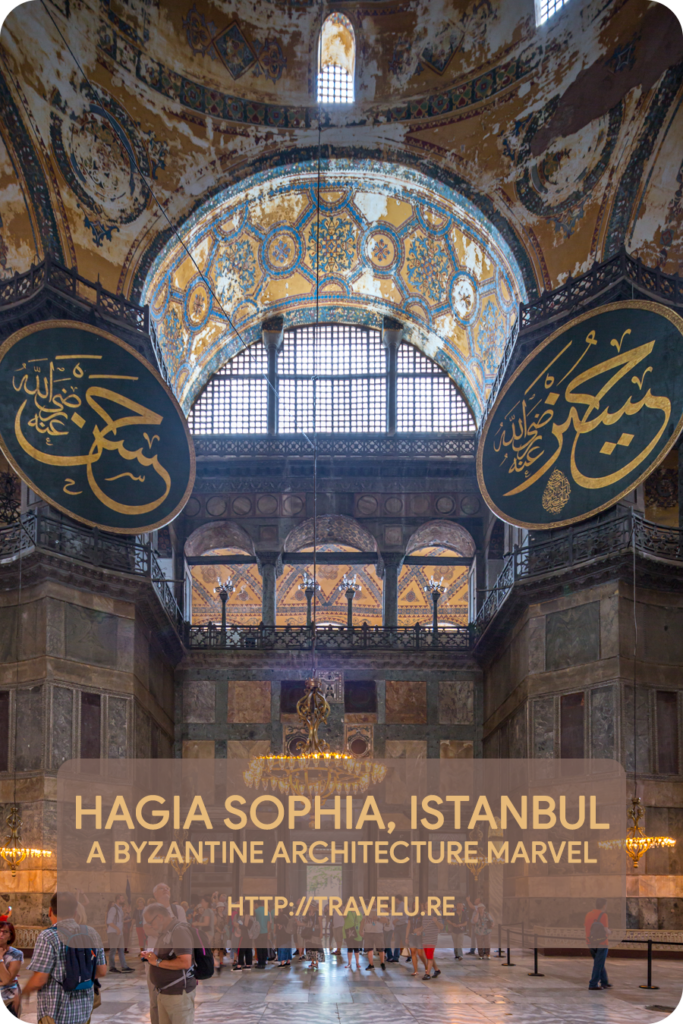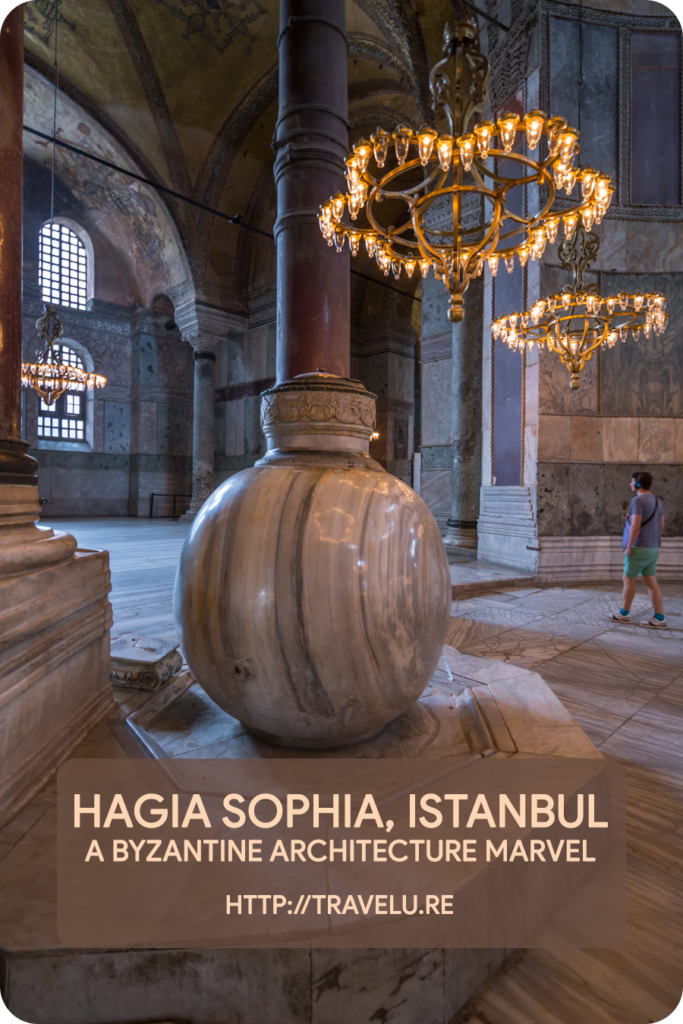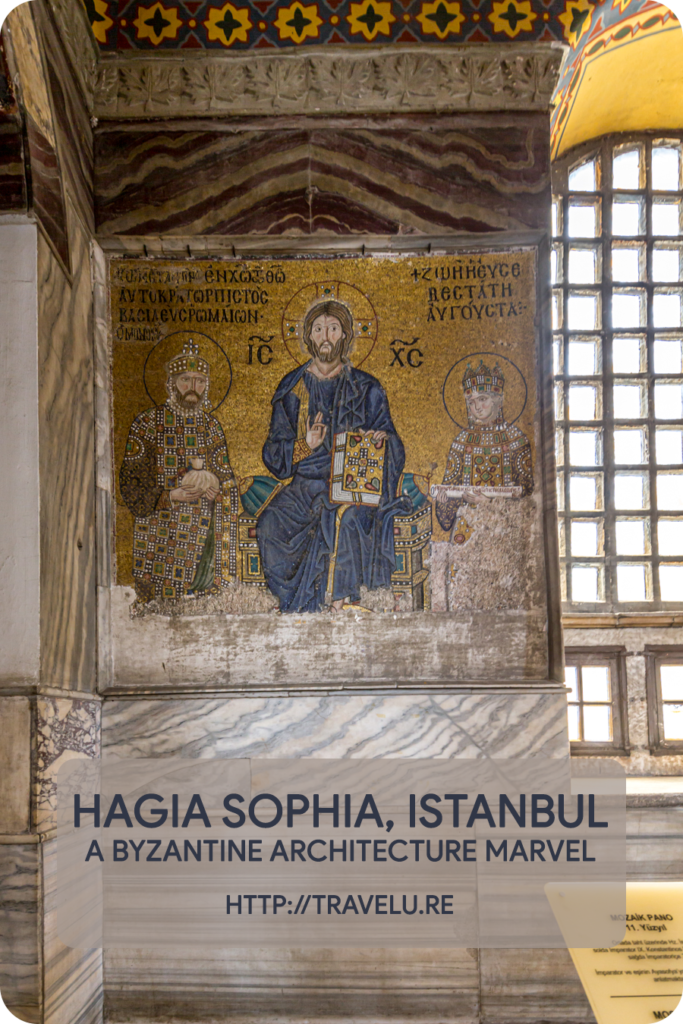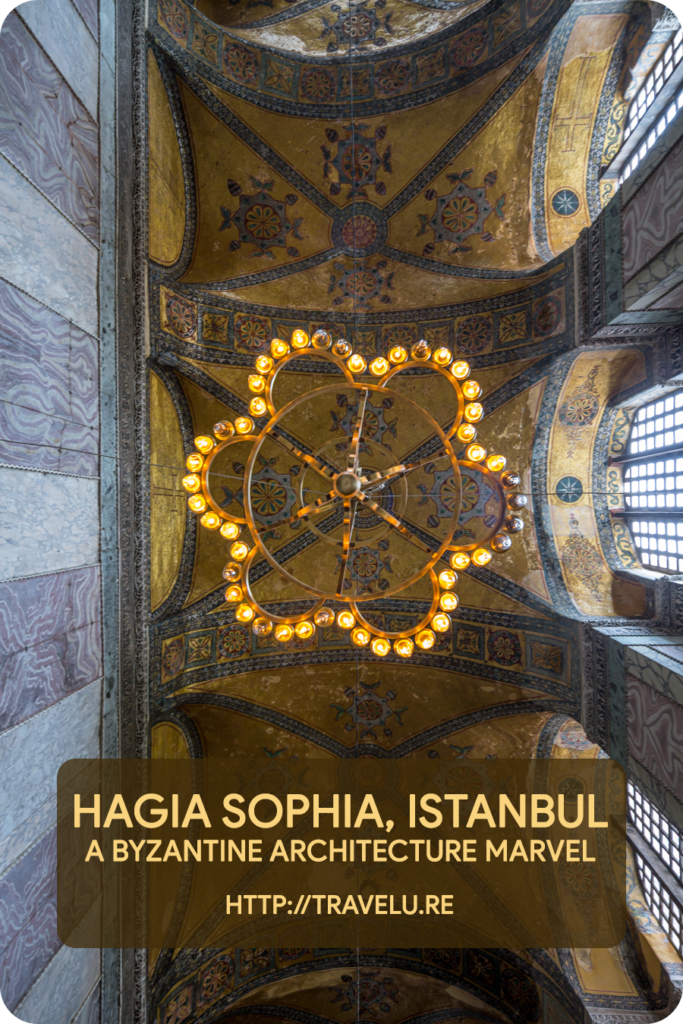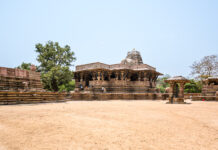Hagia Sophia, Istanbul – A Byzantine Architecture Marvel
An effortless marriage of Asian architecture with the European gives Istanbul a distinctive skyline. And why not? After all, it is the only city that belongs to both continents! At the peak of the Byzantine (Eastern Roman) Empire, Constantinople (erstwhile Byzantium) influenced the architecture of the Roman Empire more than Rome. It continued to do so even after it fell to the Ottomans in the 15th century.
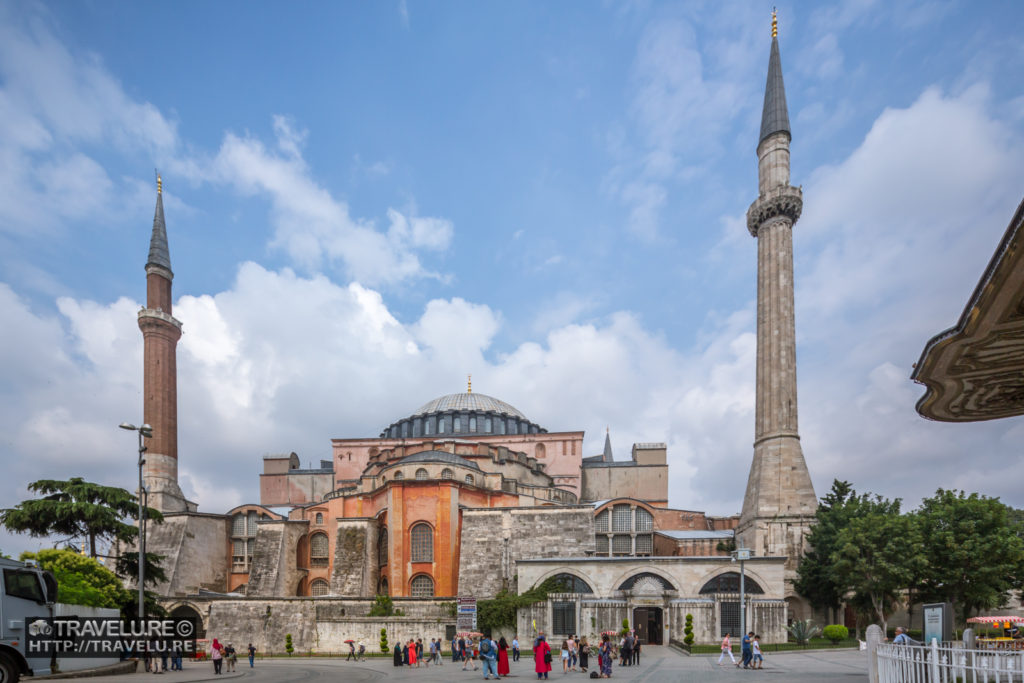
The landmark structures of that architectural style include the Hagia Sophia (meaning ‘Holy Wisdom’) that was built in the 6th century CE as the Patriarchal Cathedral of the Imperial capital, Constantinople. It was the largest Christian church of the Eastern Roman Empire and remained so for ~1000 years until the completion of the Seville Cathedral in 1520 CE.
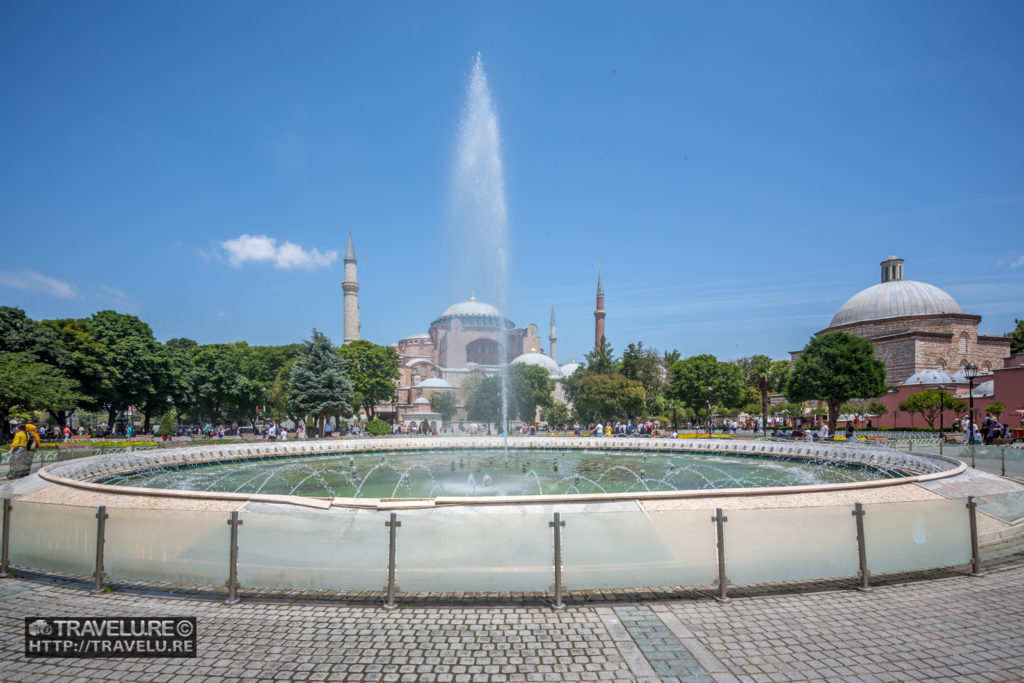
A Brief History
From 537 CE until 1453 CE, it was the Eastern Orthodox Church, barring a 57-year period in between (1204-1261 CE) when it was converted to a Roman Catholic Church. After the Ottomans took over the city, the Church of Hagia Sophia was converted into Hagia Sophia Holy Grand Mosque.
After this conversion, the Ottomans emulated Hagia Sophia’s architectural style to build many notable mosques around Turkey, including the 17th-century Blue Mosque (known amongst the locals as the Sultan Ahmed Mosque) in Istanbul. It remained a mosque until the Turkish Secular Republic converted it into a museum in 1935. As a part of the historic areas of Istanbul, Hagia Sophia is also a UNESCO site. In a disturbing 2020 development, Turkey has reversed the 1935 decision and turned Hagia Sophia again into a mosque.
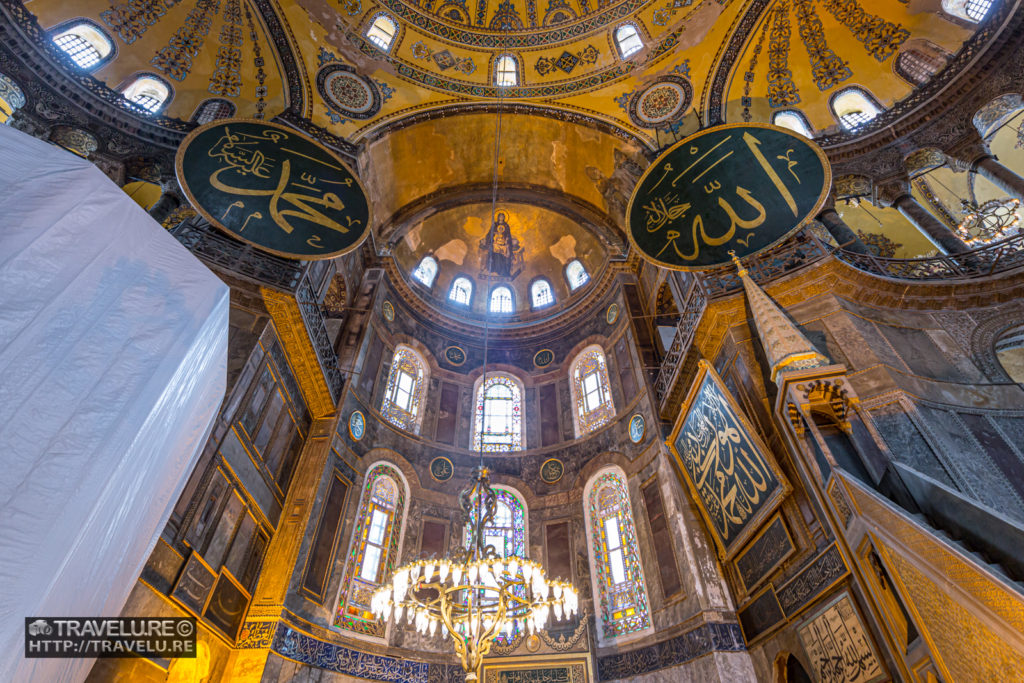
Hagia Sophia Architecture
At the time of its construction, its nave was the largest indoor space in the world, almost 200 x 85 metres. It also was one of the first structures to use a pendentive dome that allowed a round dome to cover a square space. The height from the floor to the top of the domed ceiling is an unbelievable 55.6 metres! Such cavernous dimensions made me feel insignificant while I was inside!
Its central atrium has a double-height ceiling covered with its trademark round dome. The periphery of the gigantic hall has an upper level comprising a horseshoe-shaped gallery. The floor of the entire structure is from the 6th century!
Mosaics and marble pillars decorate the interiors, and the embellishments within are stunning. The many levels of stained glass windows, the murals between the window arches and on the domed ceiling, the colossal marble lustration urns, the massive Persian script pendants adorning the walls, and the imposing chandeliers – they all imbue the interiors an awe-inspiring feel and enigma. No wonder experts consider it the greatest surviving example of Byzantine architecture.
Hagia Sophia – Some idiosyncrasies
There is a ramp leading from the ground floor to the upper gallery. For a church, this seems strange as most notable churches took pride in their stupendous staircases – from grand wide to stunning spirals. But then, the Ottoman Emperors were lazy. And they could afford to be. They wouldn’t walk to the first floor of Hagia Sophia. Instead, slaves carried them up the ramp! My feeling is the Ottomans must have made alterations and built these ramps.
Hagia Sophia can brag to have the world’s first photoshopped artwork – the Empress Zoe mosaic on its first floor. The empress married at least three times, and hence had the face of the person on the left repainted at least thrice to depict her then-husband.
While Hagia Sophia may have been the place of royal prayers for many centuries, I’ll take you to the historical royal palace in Istanbul next week. Till then, share your comments on this landmark edifice of Istanbul!

